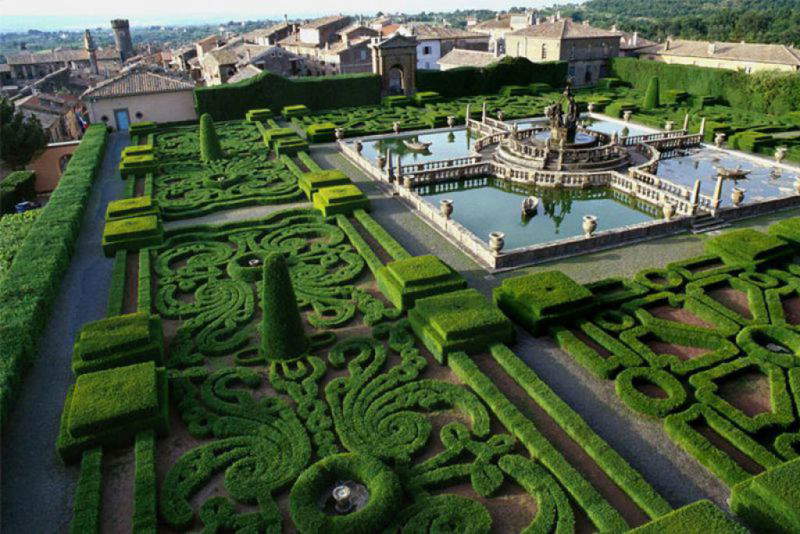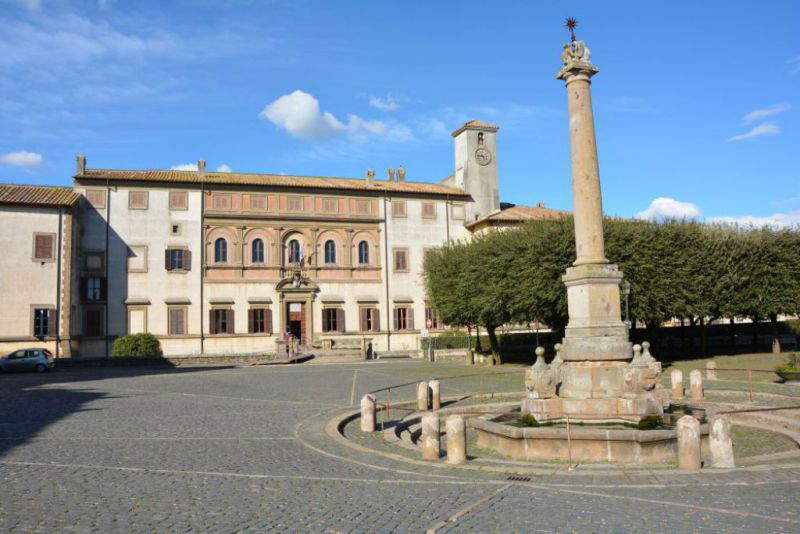A fief of the Farnese family, a land closely linked to the papal court and its exponents, an area where the great artists of Mannerism worked for several powerful lords of the sixteenth century: this is Tuscia, the area of northern Latium around Viterbo, which in the sixteenth century experienced a season of great artistic flourishing, although politically its affairs remained on the margins of the larger Italian and European history. At that time, Tuscia, which we could roughly correspond to the present province of Viterbo, was basically divided into two parts: the area on the border with Tuscany was the territory of the Duchy of Castro, the state founded in 1537, ruled by the Farnese family and annexed by the Papal State in 1649 after the Second Castro War (which led to the complete destruction of the splendid capital, Castro, of which only a few remains now remain in the woods not far from the town of Ischia di Castro), and the southern area was instead the domain of the Church State.
Tuscia is home to some of the most important masterpieces of Mannerism: here, some of the main exponents of this movement, in all genres (from architects such as Jacopo Barozzi known as the Vignola to painters such as the Zuccari, Bertoja, Giovanni Baglione via sculptors such as Simone Moschino) worked producing particularly illustrative works. With our travel format we are going to discover five unmissable places to visit in two days to explore Mannerism in Tuscia.
Also known as the “Monster Park,” it was commissioned by Pier Francesco Orsini (the town of Bomarzo, now in the province of Viterbo, was in fact his family’s fiefdom), who had it built in 1547 involving several artists, probably including Vignola and Simone Moschino. It is a complex initiatory journey that unfolds along a park in which, proceeding in stages, the visitor encounters bizarre wonders, incredible constructions and strange and monstrous statues inspired by mythology. “Voi che pel mondo gite vagando di veder meraviglie alte et stupende venite qua, dove son facce horrende, elefanti, leoni, orchi et draghi”: this is the inscription that those who enter the Sacred Wood find at their entrance, as a foretaste of what they will find. It is a garden that blends literary, mythological and probably even esoteric motifs, often of no easy interpretation, entirely in line with the mentality of the time. If you would like to learn more about the Sacred Wood of Bomarzo, also read this detailed in-depth study.
 |
It was built between 1559 and 1575 to the design of several architects and commissioned by Cardinal Alessandro Farnese the Elder: Antonio da Sangallo the Younger, Baldassarre Peruzzi and Vignola (to whom we also owe the iconic royal staircase, an elliptical staircase that is one of the symbols of Mannerist architecture) took turns there, and it was the most sumptuous residence of the Farnese family in the territory. The palace is famous for its distinctive pentagonal shape, making it one of the most original buildings of the entire 16th century. Inside, there are frescoes by great artists such as the brothers Taddeo Zuccari and Federico Zuccari, Jacopo Zanguidi known as the Bertoja and several others. An integral part of the tour is the sumptuous park that culminates in the Casino delle Delizie, another building of great value. It is one of the best-preserved buildings in Lazio and precisely because of this characteristic (the rooms are all almost intact), the Palazzo Farnese in Caprarola is often chosen as a film set for costumed productions set in the 16th century.
 |
It is located on the outskirts of Viterbo: it is not clear who its designer was, but it is porbable that the construction, begun in 1511, was due to Vignola. In any case, the construction ended in 1566, when the owner of the villa was Cardinal Gianfrancesco Gambara. Today it is known as “Villa Lante” because in the 17th century it became the property of the Duke of Bomarzo, Ippolito Lante Montefeltro della Rovere. It is a complex achievement, consisting of two “casini” built in a very severe Mannerist style, decorated inside with frescoes that, in the Gambara Casino, depict mostly landscapes, while the other corp, the Montalto Casino, features mostly painted architecture. Villa Lante stands out, however, for its sumptuous garden, full of spectacular water features, fountains, waterfalls, and pools, and with a parterre that is among the most interesting in Italy: a true example of how Mannerism succeeded in imposing itself even in garden architecture.
 |
It was built between 1578 and 1585 at the behest of Giorgio III Santacroce, who ruled the fiefdom of Oriolo Romano: construction then continued under his son Honorius III, who greatly enriched the building site. It owes its name to the fact that, after an interlude in which the palace belonged to the Orsini family (from 1604 to 1671), in 1671 it became the property of the Altieri family, which remained here for exactly three hundred years, until 1971. The traditional attribution of the building (though very doubtful) is to Vignola. It is a splendid example of a well-preserved 16th-century stately home: in its fourteen rooms, frescoed mostly with biblical themes, are works by important artists of the time (such as Giovanni Baglione). Of particular value are the portraits of the popes of the sixteenth and seventeenth centuries copied from the works of great artists (Raphael, Caravaggio, Titian). As is the case with all Mannerist mansions, Palazzo Altieri also has a sumptuous garden that complements the villa.
 |
The Rocca di Carbognano is an interesting example of an ancient dwelling that has been remodeled over the centuries: unlike the buildings described above, in fact, it was not built ex novo, but is a thirteenth-century castle that underwent extensive renovation in the sixteenth century. Several families took turns inside it until, in 1494, Pope Alexander VI gave the castle to Orsino Orsini, Giulia Farnese’s husband (so much so that the Rocca is also known as the “Castle of Giulia Farnese”). Giulia Farnese herself elected it as her favorite residence: when the lady passed away, the property passed to her son-in-law Nicola della Rovere (husband of her daughter Laura Farnese), and it remained a Rovere possession until 1570, when it became the property of the Colonna family. Inside (which can be visited by appointment, contact the local Pro Loco) you can see the rooms decorated in the early 16th century.
 |
 |
| Places of Mannerism in Tuscia and the Viterbo area: five sites to see in two days |
Warning: the translation into English of the original Italian article was created using automatic tools. We undertake to review all articles, but we do not guarantee the total absence of inaccuracies in the translation due to the program. You can find the original by clicking on the ITA button. If you find any mistake,please contact us.